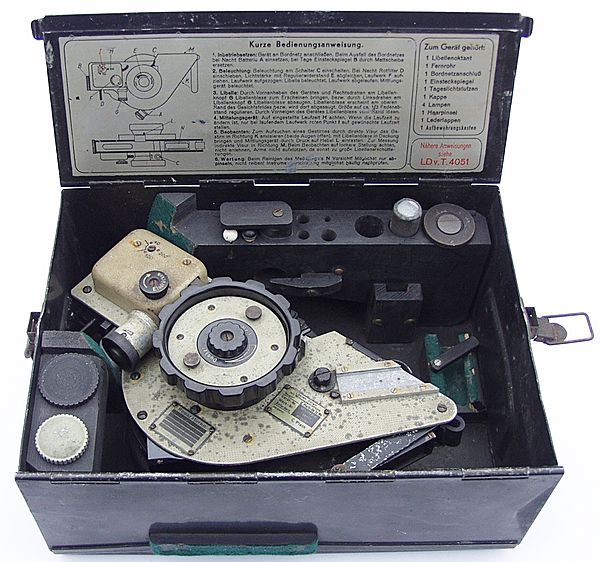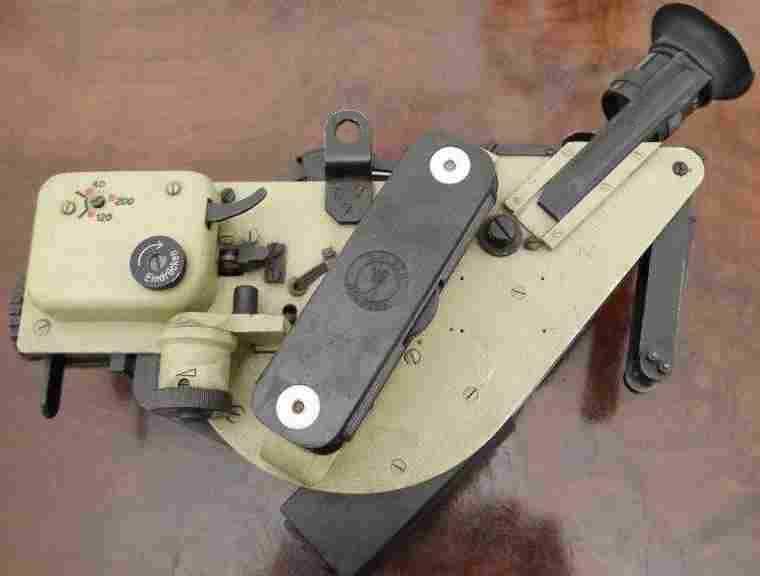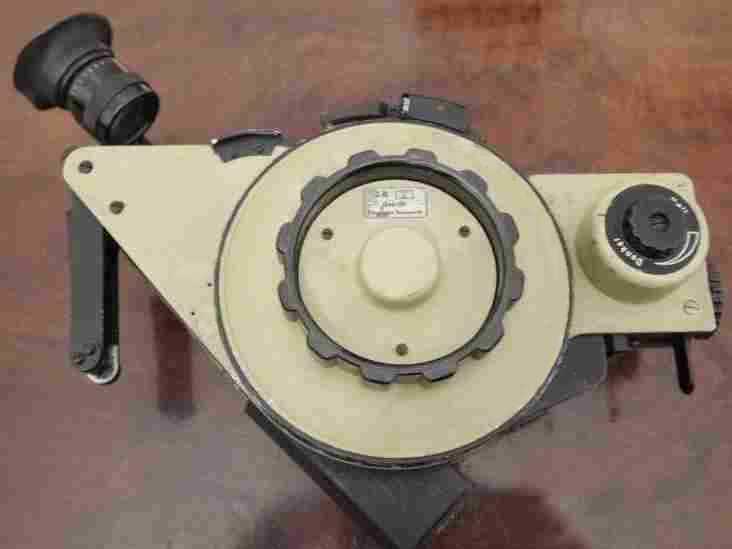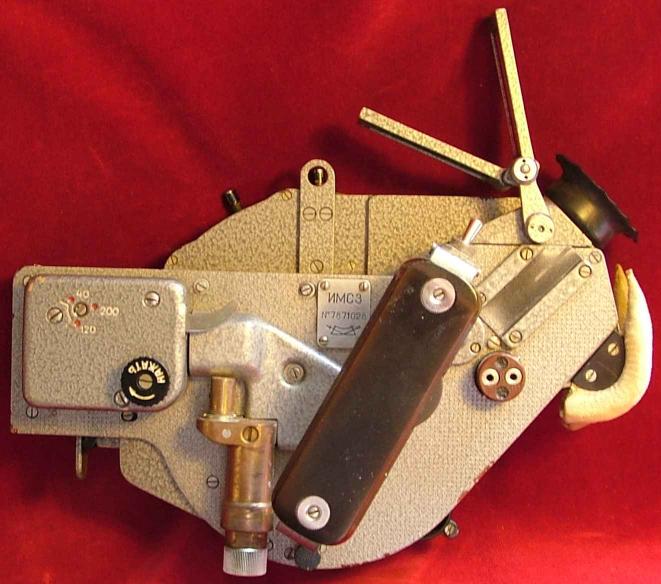C. Plath Bubble Octant.
 A typical example of the Luftwaffe
issue bubble octant. Most seem to have been in heavy wooden boxes.
This is the first one I have seen in
a steel case.
A typical example of the Luftwaffe
issue bubble octant. Most seem to have been in heavy wooden boxes.
This is the first one I have seen in
a steel case.

 Because of increasingly heavy bombing
by the Allies the authorities in Germany moved a lot of their
"shadow" factories making important equipment to the
East, into Poland and other areas more remote from the British
aircraft carrier and the bombers stationed there. This had the
consequence that when the Russians advanced from the East they
captured many of these factories, often complete with staff. This
explains why post the Second World War the Russians were producing
identical equipment on wartime German machinery. Initially with
German nationals doing the work.
Here are some photos of a Russian Bubble
Octant I purchased from the Ukraine some time ago. These were
used up till the '70s by most of the long range bombers and Spy
planes that were often the cause of British and other NATO airforces
"scrambling" to chase them away from NATO airspace.
Because of increasingly heavy bombing
by the Allies the authorities in Germany moved a lot of their
"shadow" factories making important equipment to the
East, into Poland and other areas more remote from the British
aircraft carrier and the bombers stationed there. This had the
consequence that when the Russians advanced from the East they
captured many of these factories, often complete with staff. This
explains why post the Second World War the Russians were producing
identical equipment on wartime German machinery. Initially with
German nationals doing the work.
Here are some photos of a Russian Bubble
Octant I purchased from the Ukraine some time ago. These were
used up till the '70s by most of the long range bombers and Spy
planes that were often the cause of British and other NATO airforces
"scrambling" to chase them away from NATO airspace.
 The heavy wooden box is typical of
most of the Russian instruments The original German units had
a more elaborate box.
The contents photo mounted in the case
lid.
The heavy wooden box is typical of
most of the Russian instruments The original German units had
a more elaborate box.
The contents photo mounted in the case
lid.

Apart from the Cyrilic script the instrument
is identical as far as I can see with a late model Plath. The
bubble chamber even looks similar to the wartime version.
Back to Other
Sextants





